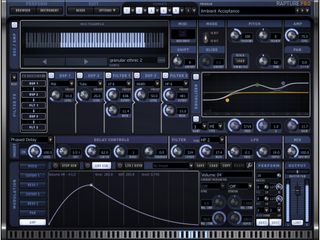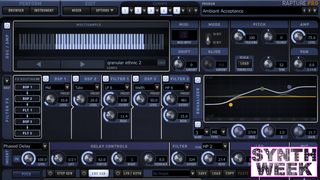SYNTH WEEK: The average modern soft synth ships with hundreds if not thousands of professionally designed presets, ready for use straight out of the virtual box, or quickly tweaked to purpose via adjustment of a few key parameters. Indeed, these days, you don't really need to know how to program synths to get awesome sounds out of them.
If, however, you're serious about music production, learning how to synthesise your own basses, leads, pads and FX is a must - and we don't just mean lowering the filter cutoff, cranking the LFO depth and hitting 'Save As'; we're talking such esoteric delights as oscillator layering, elaborate modulation setups, onboard effects processing and a whole load of acronyms - PWM, FM, AM, etc.
Hopefully, as a MusicRadar reader, you've at least got the basics of synth sound design down already, and with these ten tips we hope to get you thinking about the deeper aspects of this key electronic music discipline.
1. Get curious
In case nobody bothered to tell you, the standard way to hone your synth skills is to test a synth, feature-by-feature, with no particular goal in mind other than to find compelling sounds and note the methods behind them. You'll have plenty of "so that's how they do it" moments, and maybe even the odd "now that's a cool sound that I'd never heard before" moment. Armed with the synth's manual, this is even easier, and you'll come away feeling empowered and inspired.
2. Treat it like a puzzle
When you set out to make a sound, work your way through each section of the synth (eg, oscillators, filters, envelopes) as if you're building a puzzle. Each section is a piece that adds to the big picture, so make it count. Once your patch is close to how you want it, tweak each section over and over again until you run out of ways to better it; use all that's on offer to coax your perfect sound.
3. Start from scratch
Dissecting professionally designed patches is a smart way to find out how skilled sound designers pull off certain sonic traits. When you come to make your own sounds, though, it's usually best to begin with a blank preset. Starting from scratch may seem a bit scary at first, but it means you won't get lost in someone else's puzzle, and it'll be much easier to keep track of how each section of the synth plays its role in the final result.
4. Contextual tweakage
How much detune is too much? Are the envelopes short enough? Should the filter be set to 12 or 24dB per octave? There are no one-size-fits-all answers to these sorts of questions. Often, the best thing you can do is figure out how you want the synth patch to come across in the specific production it's intended for. So make your final synth adjustments only after you've established a MIDI arrangement. That way, you can audition the synth part in context with the rest of the production and make those tweaks bespoke.
5. Keep it moving
Find as many ways as you can to keep all aspects of your synth patch in motion, without losing its overall character. Master sound designers know how to conjure the contrast and dynamics human ears crave. Sometimes, motion within a synth preset is so subtle that you might ask, "Is there any point?" That's the magic fairy dust, baby! Trust us, it matters.

6. Know your waves
Make time to play with the basic waveforms (sine, triangle, square, pulse, sawtooth) and get to know their unique strengths - even if you plan to use loads of wild wavetables or FM. It's a rookie mistake to overlook the diversity of these fundamental waveshapes. Take our advice and you'll soon be ready to reproduce the vast majority of synth parts you hear on records.
7. Ignore synth hype
There's no such thing as 'better or worse' when it comes to synths - only 'strengths and weaknesses'. Furthermore, what you think of as a synth's weakness in one case might be its strength in another. For example, unsteady oscillators might be crap for creating a progressive house bass patch, but magic for manufacturing interesting leads and pads. Keep an open mind, collect synths, conduct shootouts, and always play to each one's strengths.
8. Tailor performance
Compose your MIDI parts mindfully in order to play to each preset's sonic strengths. If you've chosen a preset before you have any MIDI patterns for it, figure out which notes and rhythms best flaunt its character - there'll be at least one sweet spot. When crafting presets, use the keytrack (aka key follow) modulation source skilfully to extend the range of notes over which the patch sounds good.
9. Go long
Aim straight for the bullseye within the synth. If you feel you have to rely on a chain of external effects just to make a sound fit, then chances are you'd be better off modifying - or even replacing - the patch itself. Where possible, use added effects not to create your sound, but to enhance it. If you do the heavy lifting with synth design instead of external effects, your mixdown will be easier to do, and it'll sound better too!
10. Don't go all-out
When you're playing with a synth on its own, you may want to make patches that fill out the whole frequency range. Don't do it, Luke, it's a trap! Above all, you need to leave plenty of space in the top end for other sounds in your mix. Don't let oscillators gain too much power above about 2kHz. Use filter envelopes wisely, only letting through as much as you need, succinctly. Search your feelings - you will know this to be true.
Synth Week is brought to you in association with Novation. For more tutorials, tips and features, check out the Synth Week hub page.


